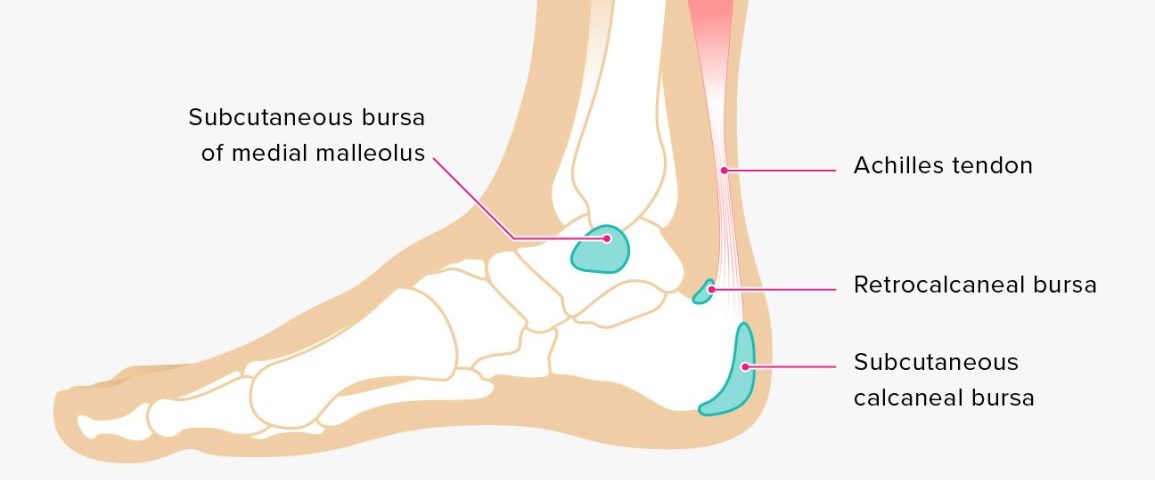Retrocalcaneal bursitis is caused by the inflammation or swelling of the retrocalcaneal bursa, which is located between the anterior aspect of the Achilles tendon and the calcaneous bone (heel). Like the Achilles bursa, the retrocalcaneal bursa is located superior to the insertion of the Achilles tendon. A burse is a fluid filled sac that decreases friction between two tissues
Causes
- A direct blow to the retrocalcaneal bursa can produce inflammation and irritation.
- A fall where one lands improperly on the ankle or the retrocalcaneal bursa.
- Constant pressure on the retrocalcaneal bursa from use of the ankle.
- Repeated stress injury to the retrocalcaneal bursa and tendons from a high level of activity, which can also cause tendonitis in addition to bursitis.
- Complications from rheumatoid arthritis, osteoarthritis or gout.
- Infection of the retrocalcaneal bursa or ankle.
- The retrocalcaneal bursa can become swollen as a response to other ankle conditions.
Symptoms
- Pain and tenderness felt over the location of the retrocalcaneal bursa, and concentrated at the back of the ankle by the heel.
- Swelling
- Loss of motion of the ankle
- Pain with activities that stress the retrocalcaneal bursa like walking, jumping, running or activities that cause stress on the tendons that are lubricated by the retrocalcaneal bursa
Common Physical Therapy interventions in the treatment of retrocalcaneal bursitis include:
- Manual Therapeutic Technique (MTT): hands on care including soft tissue massage, stretching and joint mobilization by a physical therapist to regain mobility and range of motion of the ankle. Use of mobilization techniques also helps to modulate pain.
- Therapeutic Exercises (TE) including stretching and strengthening exercises to regain range of motion and strengthen muscles of the ankle to support, stabilize, and decrease the stresses placed on the retrocalcaneal bursa and tendons of the ankle joint.
- Neuromuscular Re-education (NMR) to restore stability, retrain the lower extremity and improve movement techniques and mechanics (for example, running, or jumping) of the involved lower extremity to reduce stress on the retrocalcaneal bursa and tendons in daily activities.
- Modalities including the use of ultrasound, electrical stimulation, ice, cold laser, and others to decrease pain and inflammation of the retrocalcaneal bursa.
- Home program including strengthening, stretching and stabilization exercises and instructions to help the person perform daily tasks and advance to the next functional level.
